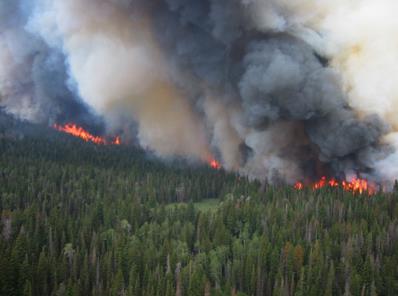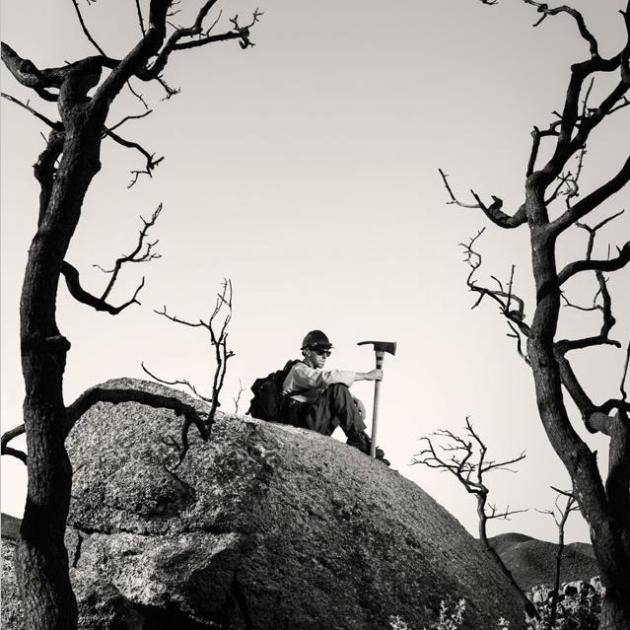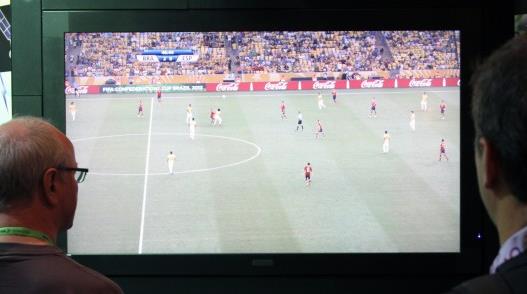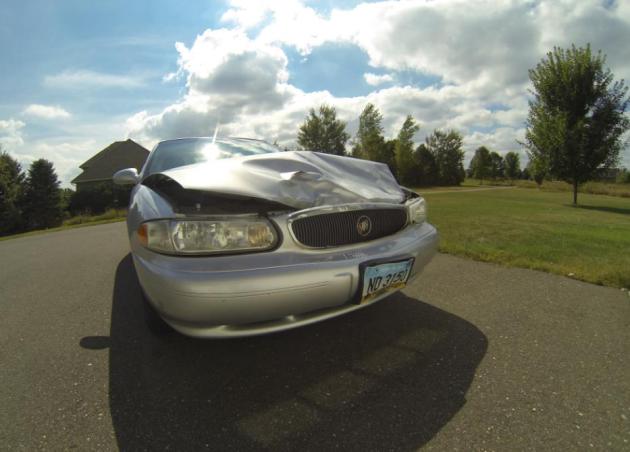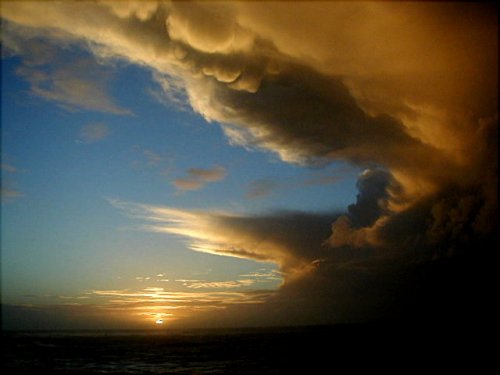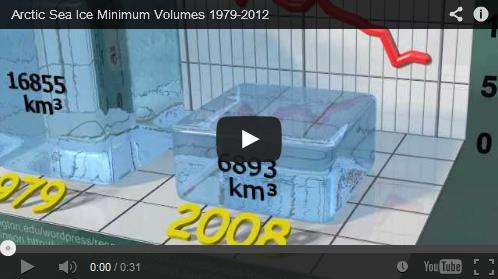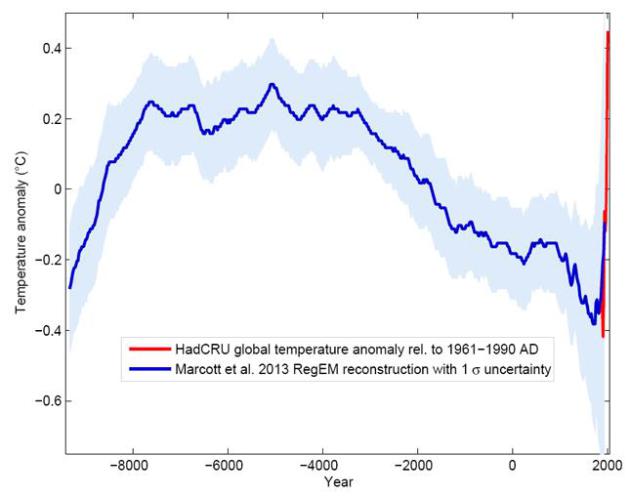Christmas Wish
All
I want for Christmas is some time away from my laptop, quality time
disconnected from The Matrix. That, and an emergency generator would be
nice.
Yesterday I spoke to utility executives at The Midwest
Energy Association, where I talked about weather & climate trends.
Extreme weather has triggered a 10-fold increase in electric grid
incidents since 1992 across the USA. Keeping the lights on has become
even more challenging. Take nothing for granted.
That, and an
update on the sun, at the peak of the solar cycle. It's been very quiet
as of late, but in any given decade there's a 12 percent risk of an
X-class solar flare capable of bringing down parts of the power grid.
Have a nice day!
This is my cue to turn to the sports page.
No
weather-gotchas lurking out there anytime soon close to home, although a
morning thundershower may jolt you from your stupor. Behind this warm
front highs top 80F by late afternoon. A September summer serenade. Soak
it up because a fresh push of 60s arrive via Canadian Air Mail Friday
& Saturday; weekend lows dipping into the 40s.
Fresh air - low
humidity - fewer bugs. Now if we can just get a 2-3 day soaking
rainstorm to replenish soil moisture we'll be in great shape!
*
graph above courtesy of The Energy Information Administration, U.S Global Change Research Program.
Ripe For Scattered Showers and T-showers.
Yesterday's 18Z NAM is printing out half an inch of rain this morning,
another inch of rain early Thursday, which seems aggressive, but
theoretically possible. The arrival of much warmer, 80-degree air sets
off a few showers and T-showers this morning; the arrival of a cooler
front sparks more thunder tomorrow - then dry weather prevails Friday
into much of Monday.
Partial Reprieve For Colorado.
The 4 km. NAM model from NOAA shows scattered T-storms, mainly over the
Rockies, but light to moderate showers can't be ruled out along the
Front Range, including hard-hit communities from Boulder to Lyons and
Longmont, Colorado. The soggy remains of "Ingrid" will spike showers and
T-storms over Texas, while a surge of warmer air triggers scattered
T-storms over the Midwest and Great Lakes over the next 36 hours.
Animation: Ham Weather.
Cool Weekend Amidst An Otherwise Mild Bias.
No more 90s in sight - no frost either. After peaking at or above 80F
today a cool front ushers a real taste of September into MSP by late
week; highs holding in the 60s Friday and Saturday, possibly reaching 70
Sunday before surging well into the 70s next week. Dew points peak
around 70F tomorrow, very sticky, before dropping into the 30s and 40s
by late week. Graphic: Weatherspark.

3-Day Inundation A 1 In 1,000 Year Event.
For the record, Minnesota has experienced four 1 in 1,000 year flash
floods since 2004, according to the Minnesota Climate Office, 3 of them
in southern Minnesota, the massive flood that hit Duluth in June, 2012
qualifies as 1 in 500 to 1 in 1,000 as well. Here's an excerpt of a
story from Climate Central and
The Star Tribune: “....
This
is clearly going to be a historic event,” National Weather Service
Director Louis Uccellini said in an interview. “The true magnitude is
really just becoming obvious now.” Uccellini said the Weather Service
has initiated a review of its performance leading up to and during the
event. Although the potential for heavy rainfall was in the agency’s
forecasts a week in advance, he said, “Clearly the magnitude of the
rainfall and the repetitiveness of it in some critical areas was not
pinpointed” well ahead of time. Uccellini said that this event will be
the new historical high water mark for many area rivers and streams. In a
technical discussion on Thursday, the NWS described the rainfall
amounts as “biblical...”
Photo credit above: "
This
aerial photo shows part of Lyons, Colo. which was hard hit by flooding
in recent days, Tuesday, Sept. 17, 2013, as seen from a rescue
helicopter flown by the 2-4 GSAB 4th Infantry Division based in Ft.
Carson. The emergency airlifts of flood victims waned Tuesday, leaving
rescue crews to systematically search the nooks and crannies of the
northern Colorado foothills and transportation officials to gauge what
it will take to rebuild the wasted landscape." (AP Photo/The Daily Camera, Mark Leffingwell, Pool)
Colorado's "Biblical" Flood By The Numbers.
The Capital Gang's
meteorologist Jason Samenow has some jaw-dropping statistics,
suggesting a 1-in-1,000 Year Flood for some communities along the Front
Range; here's an excerpt: "The clean-up effort in the aftermath of the
flood described as “biblical” by the National Weather Service is just
beginning. Today, the biggest civilian airlift operation is underway
since Hurricane Katrina, searching for and seeking to rescue over 1,200
missing/stranded people in vast areas completely cutoff by
floodwaters.Here’s a collection of numbers which helps tell the story of
this historic flood:
0.1 percent, the
probability of such a rainstorm occurring in any given year in Boulder
County (“Such values shouldn’t be taken as gospel—there are important
caveats, including the hard-to-model behavior of the most extreme
events—but they do suggest how truly noteworthy this week’s rains were,”
writes Bob Henson, of the National Center for Atmospheric Research)..."
Photo credit above: "
Shown
is structural damage through Northern Colorado: Boulder, Longmont,
Estes Park, Lyons, and Hwy 34 along the Big Thompson River." (Colorado National Guard).
Colorado Flooding From Space. Here is one of several remarkable images of flooding still underway along Colorado's Front Range, courtesy of
NASA's Earth Observatory: "
Intense rainfall in northern and eastern Colorado brought widespread, destructive flooding in mid-September 2013. Local citizens reported as much as 18 inches (46 centimeters) of rain from September 9 to 15, with some of the heaviest accumulation
along the front range of the Rocky Mountains. A break in the
precipitation allowed the Moderate Resolution Imaging Spectroradiometer (MODIS) on NASA’s Aqua satellite to acquire the top image of the floods on September 14. The lower image, taken by Terra
MODIS on September 7, 2013, shows the region before the rains began.
The images were made from infrared light to increase the contrast
between water and land. Water is typically black or dark blue in these
images, but here the sediment-laden water and muddy ground are light
blue. (In the true-color version,
the muddy river blends with the brown landscape that surrounds it.)
Irrigated farmland is bright green, while natural vegetation and bare
ground are pale green and tan, respectively. Bright blue and white
clouds still cover cities along the front of the Rocky Mountains,
including Denver, Boulder, Loveland, and Fort Collins..."
1,000 Year Flood Hits Colorado Hard. Here's a clip from a story at
Mission Network News: "
Colorado's
deluge is being classified as a 1,000-year event (meaning there's a
0.1% chance that a similar flood could happen in a given year). The
rainfall has simply been astonishing--upwards of 12 inches in less than
24 hours in some locations near Boulder. Devastating flooding resulted
in some areas, and in others, the disaster approached historical
proportions of 200 times the normal precipitation amounts. Essentially,
the weather experts say that two circular weather patterns converged
just long enough to draw in moisture from the coast of Mexico and the
leftovers of tropical cyclone Lorena. As the moisture pushed up against
the Front Range, it had trouble getting over it so it dumped right where
it was..."
Photo credit above: "
A man walks down
Wagonwheel Gap Road in Boulder, Colo., on Monday Sept. 16, 2013.
Officials hope the number of missing will drop rapidly as communications
are restored and people are evacuated throughout the region, as it did
in Larimer County, where almost 250 people were lopped off a
missing-persons list over the weekend, and Boulder County, where the
list shrunk by 187 people." (AP Photo/The Daily Camera, Mark Leffingwell)
Historic Flooding Across Colorado. You only get so much from the written word, statistics and numbers. After seeing some of the photos in this piece from
The Atlantic you get a much better sense of the scope of this flooding disaster: "
Over
the past few days, a 4,500-square-mile area across Colorado's Front
Range has been hit by devastating floods, leaving at least six dead,
forcing thousands to evacuate, and destroying thousands of homes and
farms. Record amounts of rainfall generated flash floods that tore up
roads and lines of communication, leaving many stranded, and hundreds
still listed as missing. Evacuations are still underway as weather
conditions have improved slightly. Forecasters predict drier weather by
mid-week. Gathered here are recent images of the devastation in Colorado."
Photo credit above: "
A
raging waterfall destroys a bridge along Highway 34 toward Estes Park,
Colorado, as flooding devastates the Front Range and thousands were
forced to evacuate, on September 13, 2013."
(AP Photo/Colorado Heli-Ops, Dennis Pierce).
* In Longmont, Colorado they're already calling this a
1 in 500 year flood.
1,000 Year Rainfall? Map above, courtesy of
NOAA, shows 21.13" of rain in the last 7 days in falling on South Boulder.
Historic Flooding Continues To Ravage Colorado.
It was the Perfect Storm for the Front Range. Stalled synoptic-scale
storm near Salt Lake City, turning on an extended 5-6 day "fetch" of
tropical moisture originating from the eastern Pacific with record
precipitable water values - combined with a stubborn upslope flow that
created wave after wave of heavy rain. "Atmospheric Rivers" are thought
to pose the greatest risk to California, but there's no reason why a
river of excessive moisture can't set up from southwest to northeast, as
it did late last week. Today's
Climate Matters segment
looks at the Colorado Flood; natural weather enhanced by strange twists
and turns in the jet stream (and more water vapor) that may be a direct
result of a slowly warming climate.
Flood-Ravaged Boulder, Colorado Sets Annual Rainfall Record. This takes weather whiplash to a whole new extreme. Here's a clip of
Climate Central story from meteorologist Andrew Freedman, with some remarkable rainfall statistics: "...
With
30.12 inches of rain and counting, more than half of which fell since
Sept. 9, the city has already eclipsed its previous mark of 29.93
inches, set in 1995. Boulder's average yearly precipitation (rain and
melted frozen precipitation) is 20.68 inches. The record is especially
noteworthy since before Sept. 9, Boulder, along with much of eastern
Colorado, was still mired in long-term drought conditions..."
Graphic credit above: "
So much rain fell since Sept. 9 that Boulder, Colo., went from having one of its driest years on record to its wettest." Credit: Dennis Adams-Smith/Climate Central.
Photo credit above: "Floodwater
drenched possessions fill the front yard as residents cleanup from
historic floods in Longmont, Colo., on Monday, Sept. 16, 2013. Monday's
clearing skies and receding waters revealed only more heartbreak:
toppled houses, upended vehicles and a stinking layer of muck covering
everything." (AP Photo/Chris Schneider)
* Only
22,000 homes and businesses in Colorado have flood insurance, roughly
10-25% of people living in high risk flood zones have coverage. This
will compound the disaster for survivors according to USA Today.
NWS Says Flooding "Historically Significant". No kidding. Here are more details from
The Boulder County Business Report: "
Is
this week's flooding in Boulder County a 100-year event? Five hundred?
One thousand? Jim Keeney, weather program manager for the National
Weather Service's Central Region, said the NWS hasn't made a
determination because flooding is still rampant along Colorado's Front
Range. But he did offer one comparison to lend some perspective on
Friday. The Big Thompson River flood of 1976 has long been a sort of
benchmark for flooding in the region. That flood crested at 9.31 feet in
the town of Drake. The flooding that slammed the foothills and Front
Range this year crested at 10.55' Friday morning..."
Photo credit above: "
A
house lays completely demolished in what was the path of the recent
floods that have destroyed the town of Jamestown, Colo., on Sunday Sept.
14, 2013. No one has been able to access the town until late Sunday
afternoon when crews finalized repairs of the upper portion of the road
for emergency traffic only. The town has no infrastructure or running
water. Some parts of town amazingly enough have electricity. A dozen or
so residents stayed as most of the town was evacuated by helicopters." (AP Photo/ The Denver Post, Helen H. Richardson)
What We Learned From Vermont's Epic Flood.
CNN has the story - here's a snippet: "...
From that emergency response, we learned a few critical lessons that I offer for our counterparts in Colorado:
Sleep and eat. This
flood emergency response will continue for many weeks. It is a
marathon, not a sprint, and you and your staff can only be helpful if
you take care of your own basic needs.
Ask for help.
Many folks want to help, including experts who are prepared to pitch in
at a moment's notice. Take some time to think carefully about where you
could use the extra boots on the ground and ask for assistance.
Communicate. The
first casualty of a crisis is information. Make sure you have the facts
before you act. Talk to the folks in the field. Share relevant
information with the emergency response directors. Let the public know
what you know through updates and guidance from your experts. You cannot
communicate too much..."
File photo credit above: "Water
from the Connecticut River floods Route 5 in Westminster, Vt. Tuesday,
Aug. 30, 2011, after Tropical Storm Irene moved through the area over
the weekend." (AP Photo/The Brattleboro Reformer, Zachary P. Stephens).
Twister History: Model To Correct Tornado Records For Better Risk Assessment. How does "population bias" impact tornado records? Here's an excerpt from a story at
Science Daily: "
In
the wake of deadly tornadoes in Oklahoma this past spring, Florida
State University researchers have developed a new statistical model that
will help determine whether the risk of tornadoes is increasing and
whether they are getting stronger. Climatologists have been hampered in
determining actual risks by what they call a population bias: That is,
the fact that tornadoes have traditionally been underreported in rural
areas compared to cities. Now, FSU geography Professor James B. Elsner
and graduate student Laura E. Michaels have outlined a method that takes
the population bias into account, as well as what appears to be a
recent surge in the number of reported tornadoes, thanks in part to an
increasing number of storm chasers and recreational risk-takers roaming
Tornado Alley..."
Better Safe Than Viral? Braving The Storm For A Photo.
Increasingly, in our social-media-saturated world, people are taking
big risks to get the money shot (or video clip). In light of historic
flooding in Colorado here's an excerpt of a timely story at
cincinnati.com: "
A
picture of yourself in front of a raging waterfall, flooded street or
heroic rescue team. It's an image that could go viral on social media.
It also could cost you your life. Emergency officials in Colorado are
fed up with the number of people heading straight to dangerous, flooded
areas to get a new profile picture or score some retweets. In a time of
social sharing, officials fear people will go too far for a risky,
potentially viral snapshot. "Don't risk your life for Facebook or
Twitter or Instagram," says Bronson Hillard, a spokesman for the
University of Colorado. " It could be the last picture you ever take."
Hillard says students were flocking to Boulder Creek - the waterway most
at risk for flooding - to take photos of one another with water
cascading around them..."
Photo credit above: "
Water rushes past a flooded home near Left Hand Canyon." / Brennan Linsley, AP.
Study: Past Wildfire Speeds Snowmelt. Here's a post from AP and
seattlepi.com: "
A
new study shows charred forests left behind by wildfires make the
mountain snowpack that Western rivers depend on melt faster. Lead author
Kelly Gleason, a doctoral candidate at Oregon State University,
says they found more snow fell in burned forests than in green ones.
But the snow melted off twice as fast in burned forests, and was gone 23
days earlier. The reason was the black bits sloughing off the charred
trees onto the snow intensified the heat from the sun..." (Photo: EPA).
The True Story Of The Yarnell Fire. This is an amazing, and horrifying story - here's the intro from
Outside Magazine: "
On
the morning of June 30, all 20 members of Prescott, Arizona's Granite
Mountain Hotshots headed into the mountains to protect the small town of
Yarnell from an advancing blaze. Later that day, every man but one was
dead. Through interviews with family, colleagues, and the lone survivor,
a former hotshot pieces together their final hours—and the fatal
choices that will haunt firefighting forever..."
Photo credit above: "
The lone survivor: Brendan "Donut" McDonough."
More photos from Yarnell. Photo: Dan Winters.
The Secret Financial Market Only Robots Can See.
If you thought the stock market was "rigged" you may be right. The
machines are now firmly in control, as highlighted in this eye-opening
story at
Quartz; here's an excerpt: "
What if someone told you the stock market crashed and spiked 18,000 times since 2006, and you had no idea? That’s
the contention of a group of scientists who study complex systems after
analyzing market data, collected by Nanex, since the advent of
high-speed trading. While the fallout of computerized algorithms has
been seen before, including the infamous 2010 “flash crash,” when
markets lost nearly 10% of value in just a few minutes, that same kind
of sudden volatility is going on all the time, unseen. In a new paper
called “Abrupt rise of new machine ecology beyond human response time,”
researchers found a new trading ecosystem that humans don’t even notice..."
Photo credit above: "These guys don't stand a chance." AP Photo/Henny Ray Abrams.
Japanese Broadcaster Looks Beyond 4K to 8K. And I was just starting to feel good about my
HDTV.
Just think how good "The Housewives of Dubuque" will look on this
thing? Which confirms my theory - by the time you take the gadget out of
the store it's already obsolete. Details from gizmag.com: "
Although
4K was the resolution du jour at IBC in Amsterdam again this year, as
it has been for the past couple of years, Japan’s national public
broadcaster, NHK, was going one better with a demonstration of 8K, or
Super Hi-Vision (SHV). The company’s roadmap set a 2020 date to begin
satellite broadcasts of 8K content, which aligns nicely with the
Olympics recently being awarded to Tokyo for that year..."

Because Who Wouldn't Appreciate A Refreshing "Road Shower"?
Now I've officially seen everything. If your commute (or off-road
biking/driving) leaves you sweaty and you just can't wait to get home to
get that springtime-fresh-feeling, check out this article from
Gizmag: "
After
a day spent hiking, biking, climbing or otherwise exerting yourself
outdoors, a shower sure feels nice. Climbing into your car and driving
home all sweaty in order to take said shower, however, can be quite a
drag. That's why Colorado native Joel Cotton created the Road Shower.
It's a pressurized water tank that mounts on your roof rack, allowing
you to grab a quick shower beside your car – just look out for Peeping
Toms..."

Deer Rutting Alert.
We're quickly entering into deer mating season, which peaks in October
and November. The deer are frisky, and more erratic than usual, as Lonna
Koch (WNTV meteorologist Rob Koch's wife) discovered while driving in
the Stillwater area yesterday. She's OK, but her car isn't. Be careful
out there!
4th warmest. Combined land-sea global temperatures in August tied 2005 for the 4th warmest since 1880, according to NOAA NCDC.
Climate Stories...
Climate Change: Arctic Ice Volume Shows Consistent Decline.
All those rumors of a "recovery" in Arctic ice may be just that - the
size of the ice cap has grown from last September's record low, but ice
thickness/volume is another story. Here's a video clip and excerpt of a
story at
allvoices.com: "
The latest observations on Arctic sea ice from the European Space Agency’s (ESA) Cryosat mission,
presented at a symposium in Edinburgh, Scotland, last week, reveal a
new record low volume of sea ice in the northern polar region. It may be
too early to draw conclusions from the Cryosat data since this ESA
mission to monitor variations in the thickness as well as the extent of
polar ice has only been returning data since winter 2010-2011 in the
northern hemisphere but the latest measurements on Arctic sea ice
volumes reinforce historical data on Arctic sea ice melt from the
American Meteorological Society, who last month published
their climatic report card for 2012, “State of the Climate in 2012.”
From Cryosat’s most recent data, it could be a case of ‘never mind the
width, feel the quality’ when it comes to Arctic sea ice. Over the past
two decades or so, satellite data has confirmed a consistent downward
trend in the extent of Arctic sea ice but Cryosat returns accurate
information on the mass or volume of ice being lost, allowing scientists
to obtain a more complete picture of the changes taking place..."
5 Reasons Why Sea Ice Decline Should Be Front Page News. Here's a clip and video explainer from a story provided by
The Union of Concerned Scientists: "
In
the next few days the Arctic sea ice will reach its minimum extent for
2013. At the end of this year’s summer melt season, the areal extent
covered by sea ice was more than a million square kilometers below the
30-year average. That’s a lot of ice missing compared to an average
year. An area of frozen ocean—ten times the size of Indiana, or four
times the size of Colorado, or a third bigger than Texas—is just not
there this summer. While this is shocking and part of a several-decade
decline in Arctic sea ice, what’s also alarming is the lack of
substantive media coverage. The decline in Arctic sea ice should concern all of us in the same way that a collapse of the economic system does. It deserves front page billing. A recent Nature commentary
stated that “the costs of a melting Arctic will be huge, because the
region is pivotal to the functioning of Earth systems such as oceans and
the climate.” They don’t mince their words..."
Europe's Hottest Days Are Even Hotter Because Of Climate Change.
We're seeing more 2-Sigma and 3-Sigma heat waves, 2 to 3 times the
standard deviation from "average". Whatever average is these days.
Here's a clip from
redorbit.com: "While
climate change
has caused temperatures to spike throughout much of the world, a
stretch of Europe from southern England and northern France to Denmark
has been especially affected, according to new research published
Wednesday in the journal
Environmental Research Letters.
Researchers, from the Grantham Research Institute on Climate Change and
the Environment at the London School of Economics and Political Science
and the University of Warwick, have found that the hottest five percent
of days — as well as the coldest nights — in this region of the
continent have warmed more than four times the global average since
1950..."
Photo credit above:
Thinkstock.com.
What's Causing Global Warming? Look For The Fingerprints. Here's an excerpt of an article at
The Guardian: "...
What
did they find? Certain patterns emerge that are consistent with the
"human only" scenario. For instance, the heating of the lower atmosphere
and cooling of the upper atmosphere, which satellites clearly see,
could only happen if human emissions were the culprit. But the study
went further; they actually stacked the deck of cards in favor of
nature. They used solar and volcanic variations much larger than those
that actually occurred since 1979. The strategy was to see if even a
worst case "world without us" could be made to look like the current
measurements. But, even that didn't work. The human influence still
stood out. Perhaps the best summary is in the abstract of the paper.
"We
show that a human-caused latitude/altitude pattern of atmospheric
temperature change can be identified with high statistical confidence in
satellite data. Results are robust to current uncertainties in models
and observations … Our results provide clear evidence for a discernible
human influence on the thermal structure of the atmosphere".
Temperature Chart For The Last 11,000 Years. Here's an excerpt from a post at
kottke.org: "
For the first time, researchers have put together all the climate data they have (from ice cores, coral, sediment drilling) into one chart
that shows the "global temperature reconstruction for the last 11,000
years" The climate curve looks like a "hump". At the beginning of the
Holocene - after the end of the last Ice Age - global temperature
increased, and subsequently it decreased again by 0.7 ° C over the past
5000 years. The well-known transition from the relatively warm Medieval
into the "little ice age" turns out to be part of a much longer-term
cooling, which ended abruptly with the rapid warming of the 20th
Century. Within a hundred years, the cooling of the previous 5000 years
was undone..."
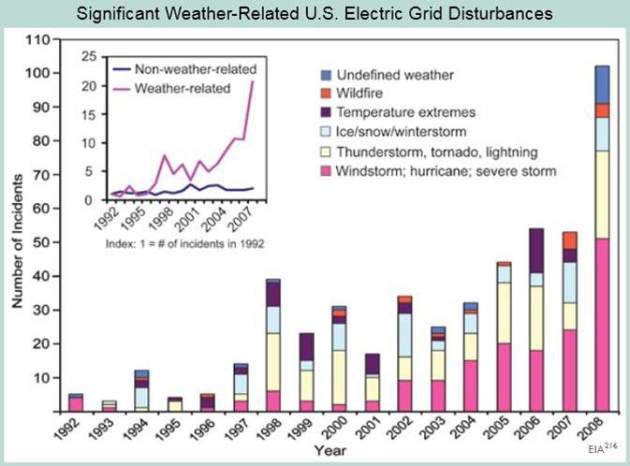

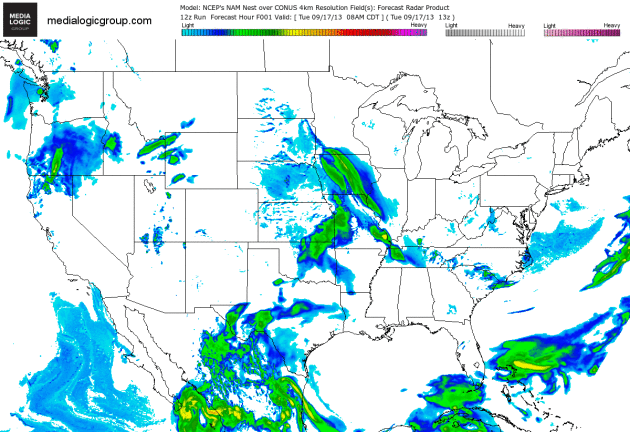

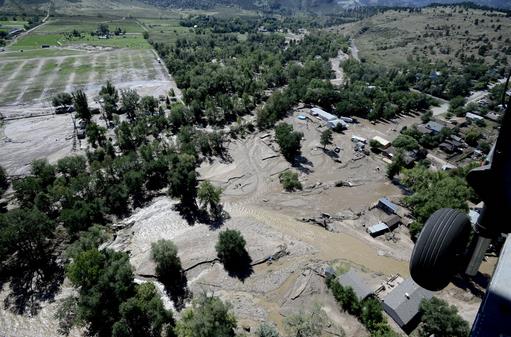

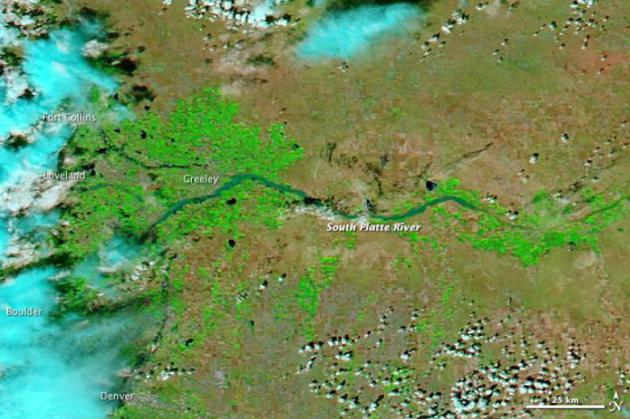
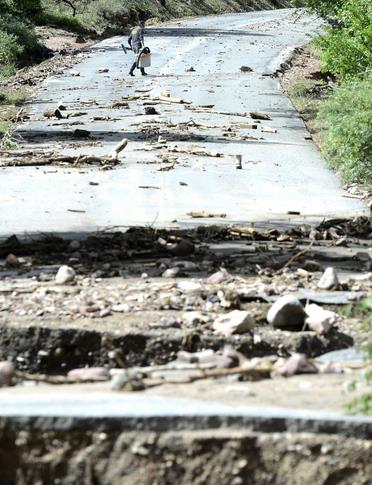
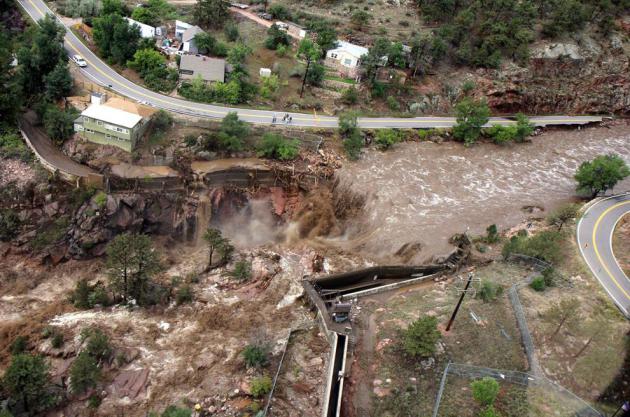
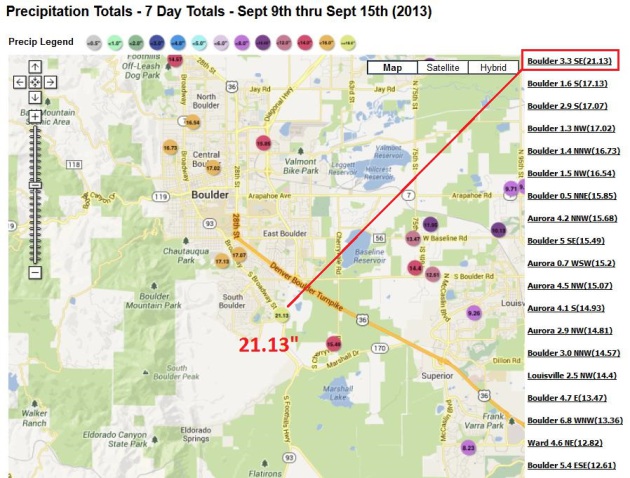
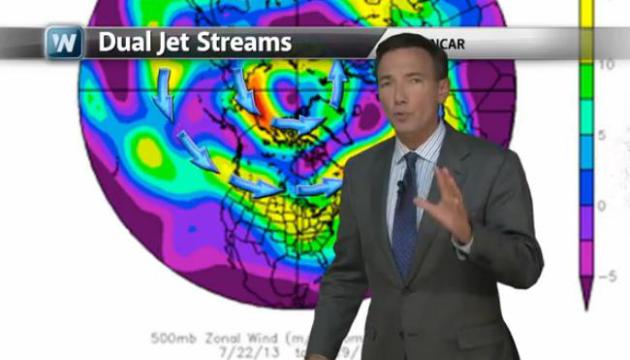
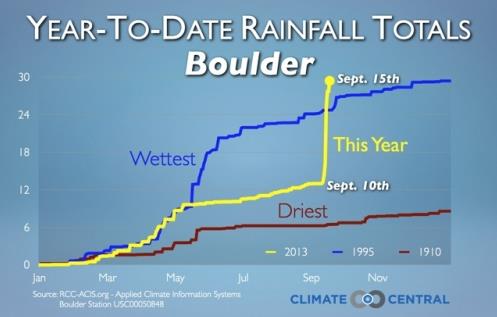
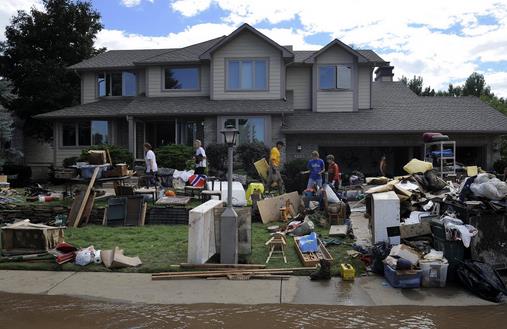

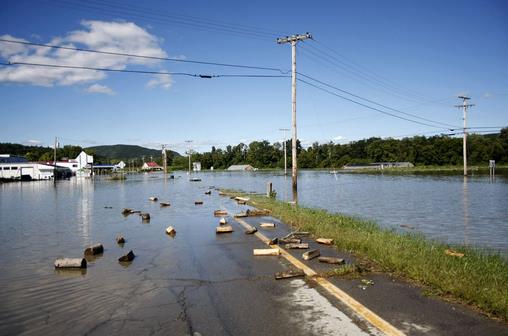
.jpg)

